






































Thanks to the support of the Martin County Commissioners and Martin County Tourism Development Authority, the 250th Anniversary of Martin County will be highlighting and celebrated through storytelling and interactive events throughout 2024.
Over 60 volunteers from around our community, representing local towns and a diverse range of organizations, have made the planning for Martin County’s 250th events possible. We are excited to see the community work together for a greater good and celebrate all the things that make Martin County such a great place to live, work, and visit.
Martin County’s 250th Committee starts the festivities during Kickoff Weekend from March 14th to 17th starting out with the Annual Dinner hosted at the Senator Bob Martin Eastern Agricultural Center, an integral part of our local economy and home to agriculture, equine, and motorsports events, among many others. On March 16th, the Moratoc Park, on the banks of the Roanoke River, is set to host the "Made in Martin County" Festival & Pop-Up Museum. The day of events include a mini parade, local music, vendors, and exhibitors from all around Martin County.
The rest of the year is set to celebrate so many of our great festivals, historical places, and community events.
Some highlighted events during our 250th year includes: Wizard of Oz Spring Musical by Martin Community Players, Martin County Arts Exhibit, Message of Easter at Piney Grove, Parmele Day, Plant a Tree 250th Ceremonies, Robersonville Music in the Park, Oak City Goose Nest Festival, Williamston Downtown Summer Music Series, Juneteenth event in Hamilton, Christmas in July at the Farmers Market, Back to School Bash, Homecoming by EJ Hayes Alumni Center, Stampede Music Fest in Williamston Downtown, Hamilton Roanoke River Festival, Bear Grass Chicken Mull Festival, Historic Fort Branch Re-enactment, Farm Heritage Day, and the Christmas Community Chorus.
To learn more about the schedule of events and local 250th history, please visit www. visitmartincounty.com and click on the 250th Anniversary tab.
Thank you to all that have had a part in making the 250th a success. Let us keep Martin County growing in ideas, collaboration, and community for the next 250 years!
Chase Conner, Martin County Tourism Director & Co-Chair for the 250th AnniversaryAnnexed from Halifax and Tyrrell Counties during the anxious year of 1774, Martin County was established at the request of weary residents who had traveled long distances to faraway government seats. William Slade, a representative who served in the House of Commons, sponsored several proposals form a new county in the colony’s coastal region during the 1770s. However, none of Slade’s bills were passed during his tenure.
Eventually, Martin County was established a few months before the North Carolina Provincial Congress assembled to resist the British government. Although the original charter did not allow for the building of a courthouse, a law was later passed which levied a tax on Maritn County residents for the construction of needed municipal buildings.
The county received its name in honor of the last royal governor of North Carolina, Josiah Martin. Even though Josiah Martin angered many North Carolinas, the residents of Martin County kept its name; however, it was


from then on used to honor Alexander Martin, a prominent Federalist of the Old North State. Incorporated in 1779, Williamston, the county seat, soon became known as “Tar Landing” because of its important location along the Roanoke River. Throughout the nineteenth century and even into the twentieth century, Williamston served as a transportation center for naval stores such as tar, pitch, turpentine and even forest and neat products. The railroads along with the soon-to-follow highways opened Williamston to even greater trade during the 1900s. Other communities include Oak City, Hamilton, Bear Grass, Everetts Gold Point, Jamesville, Hassell, Parmele, Darden, and Robersonville.
The first natives in the region were the Tuscarora, who referred to the region as “Squhawky.” The Tuscarora lived off the lush forest of present-day Martin County, and they used the Roanoke River as an important trade route with other tribes in the coastal plain region. By the time the first English settlers inhabited the area in the early

1770s, the Tuscarora had migrated to other sites in North Carolina and Virginia.
Martin County’s early history has a connection to the Williams family. The seat of government in the county received its name in honor of Colonel Willam Williams, a Revolutionary War hero, who owned several plantations and estates in the northwestern section of the county. William’s father, also named William Williams, had settled in the region during the early 1770s. He and his family squatted on a track of land on the southern edge of the Roanoke River.
William Williams II, colonel of Martin County’s militia during the Revolutionary War, served as the county’s first senator in the General Assembly in 1777. The Roanoke River, flowing from Virginia into Warren, Halifax, Northampton, Bertie, and Martin counties, served as a primary trade route during the colony’s early years. One of the Southeast’s largest rivers, Roanoke, originally called “Moratuck”, flooded in 1940, and the surging water swells caused significant damage in Martin County


and in surrounding counties. The Roanoke River Basin Association, a group formed in 1945 in an attempt to limit future flood devastation, petitioned the government for construction of Kerr Dam and the Gaston and Smith Mountain Dams.
Today, the Roanoke River, along with various wetlands and swamps in Martin County, provides an ideal location for hunting and fishing for outdoor recreation.
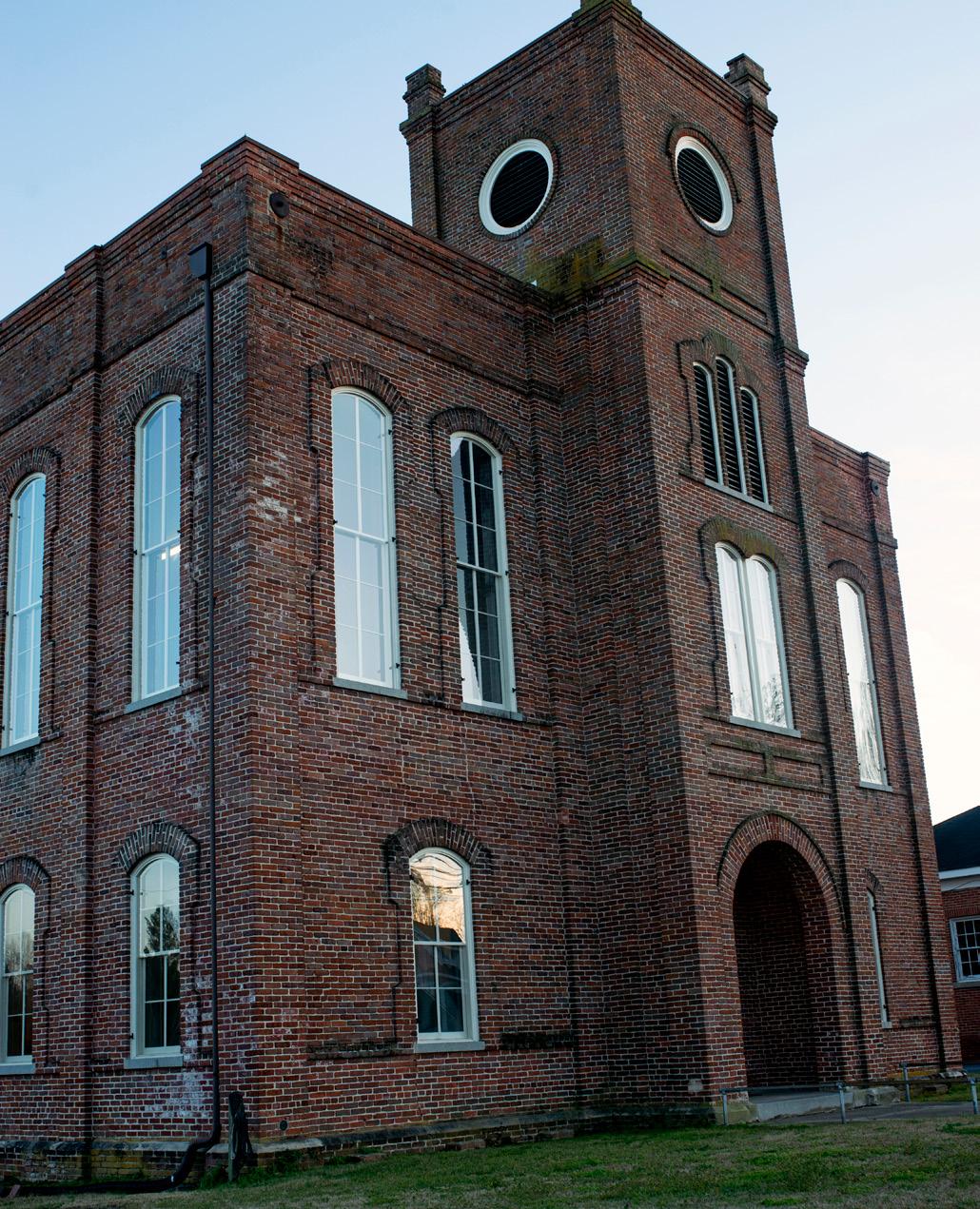

The name Bear Grass, a type of yucca prolific in the area, has been in use at least since 1761 when it was given to the area’s major swamp in a land grant.
The early settlers were farmers, with many engaged in the production of turpentine, tar and shingles from the area’s abundant forests.
Though the congregation of the Bear Grass Primitive Baptist Church organized in 1828, the Bear Grass community did not emerge until after the Civil War.
A public school started by the late 1860s, and Reuben H. Rogerson opened a general mercantile store in 1880.
The community’s development was hindered by it not being located along a navigable stream or on either of the railroad lines traversing Martin County.
A post office was established in 1885, although it was closed less than two years later.
Records are limited, complicated by the fact that Bear Grass businesses were listed in directories with Williamston addresses because that was the nearest post office. But by the turn of the century, the community consisted of several legal distilleries, cotton gins, sawmills, grist mills and blacksmith shops. Reuben H. Rogerson’s two story steampowered sawmill and cotton gin was one of the area’s largest before being destroyed by fire in November 1908.
The first decade of the 20th Century witnessed considerable growth in the community.
The town was officially incorporated on Feb. 16, 1909.
An unusual physical feature of the town is that, when incorporated, the boundary was a circle with a radius of 500 yards from a white oak “near a well at the stores of Rogers Brothers and Cowing [sic] Brothers.”
These limits remain today, making Bear Grass one of the few towns in the state laid out in this manner.
Because residents had more pressing concerns during the Great Depression, town government became dormant in 1934 and was not reactivated until June 21, 1961.
Today, you can still see the circa 1925 Bear Grass School, the 1830s-1840s Bear Grass Primitive Baptist Church, the circa 1935 Yucca House (former Bear Grass Teacherage) which sits across the road from the school, the Bear Grass Presbyterian Church.
Three frame stores built between 1895 and 1915 comprise Bear Grass’s small but historic commercial district.

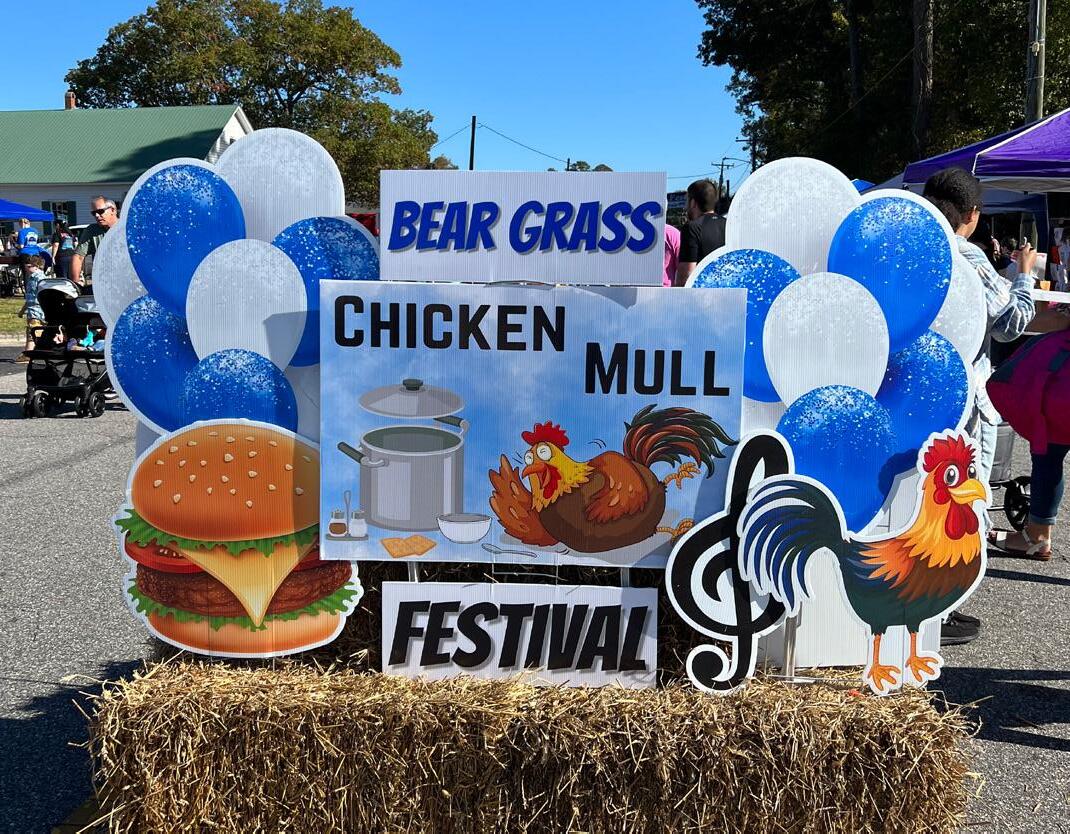


Explorethevibranthistoryof West MartinCommunityCenter! Locatedwithin anationalhistoric former schoolas acornerstoneofmuchhistoryhereinOakCity,North Carolina. WMCChasbecome apillarinthe community since2013thankstothe persistenceofthecommunity andthe school'salumni.Comeandbe apart of this nationalhistoricsite;schedule yourspecialevent,andparticipatein oure ortstobuildbettercommunitiestowhichweserve.
WestMartin CommunityCenter
400 SHwy125 -Oak City,NC westmartincc@gmail.com 252-798-9622



CommittedtoprovidingDigni ed, Respectful,Compassionateand A ordableserviceandassistanceto every familyinneed.
Havingserved familiesofthe communitysinceApril1964,we valueour reputationinproviding thehighestquality funeralservices,with personalattentionand professionalism,tohelp your familythrough di culttimes.
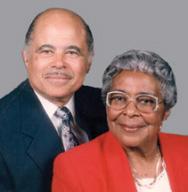
We areavailabletoservefamilies 7daysaweek!
415WashingtonStreet Williamston • 252-792-4390 MansonMo t a com





The town of Everetts was incorporated in February 1891, and was a thriving trading center situated along the railroad between Robersonville and Williamston.
It began more than 20 years earlier as a small rural crossroads named for its principal landowner, Simon Peter Everett. In 1869, he deeded some of his land to the Williamston and Tarboro Railroad Company for the construction of the railroad.
AfterOctober1882,whentheSeaboardandRaleighRailroad, the successor to the Williamston and Tarboro, finally completed the rail line, the Everetts community began to develop as a market for agricultural products such as cotton, corn, grapes, potatoes and, eventually, peanuts.
It grew into a trading center for much of Cross Roads and Poplar Point townships for farm and household supplies. The railroad, with its mail, passenger and freight services and telegraph line, was the lifeline of the community. The second impetus for growth was the incorporation in May 1890 of the Martin County Lumber Company by investors from Philadelphia, PA. In addition to a steam-powered mill, the company erected an office, commissary, two stores, and between 10 and 20 houses on a site north of the railroad at the western edge of the community.
Local tradition holds that the mill supplied the lumber for the first boardwalk at Atlantic City, NJ. In 1898, one of the investors who also served as plant superintendent, George P. McNaughton, bought out the founders, and with Simon F. Everett,

John Fraley and Samuel B. Wynn, founded the Everetts Lumber Company.
The company operated until 1909 when it was forced to close because the supplyofnearbytimberhadbeendepleted. Today, visitors can see the landmark J.T. Barnhill Building along US Business 64/13, which served as a general store and has a painted billboard on its outside wall. There is also the former Champion Automobile Building, which anchors Everetts blocklong commercial section.
The building was erected in 1919, and sold Champion, Star, Essex, Durrsant, Hudson and Pan-American automobiles before going out of business in 1930 and the post office, first established in 1884, maintains operations today.
Information from Martin Architectural Heritage:TheHistoricStructuresofRural NorthCarolinaCounty,editedbyThomas R.Butchko






Hamilton, incorporated in 1804 and located on the Roanoke River, long prospered as a bustling commercial port. Shallowdraft steamboats, the cotton gin and a burgeoning textile trade here and abroad brought river traffic to its peak during the years preceding the Civil War.
The small but thriving town might have been even more prosperous before the Civil War if any of several efforts to improve land travel had been successful. Proposals in 1832 to establish a railroad from Hamilton to Tarboro, and in the 1850s to build plank roads to Tarboro and Murfreesboro were each abandoned in the discussion stage.
Many of Hamilton’s fine old homes were built during this period (1830-1850) and are found today in the town’s National Register Historic District. The district includes some of the finest antebellum homes assembled in the county.
It also includes the circa-1881 St. Martin’s Episcopal Church, a remarkably unaltered and sophisticated example of the Gothic Revival frame church from the early post Civil War period. It is one of the most outstanding examples of frame Victorian Gothic architecture in Eastern North Carolina.
Conoho Masonic Lodge, organized in 1850, provided social pursuits. The Lodge building still stands today and is architecturally significant as a temple form building, few of which remain in North Carolina. The nearby location of the fairgrounds of the Martin County Agricultural Society made the town the focus of the county’s farmers and citizens during annual autumn fairs held from 1853 to 1860, which added considerably to the town’s activities and importance.
A self-guided walking tour of homes and other buildings in Historic Hamilton is available from the Hamilton Town Hall. Hamilton did not escape the ravages of the Civil War and there were frequent skirmishes along the Roanoke River and nearby at the Confederate Fort Branch. It is believed that many antebellum buildings in Hamilton were burned during Union
occupation of the town. The most serious Union visit occurred in December 1864 when an unsuccessful assault was made on Fort Branch. After the Civil War, tobacco and peanuts replaced cotton as the area’s major commodity and another era of prosperity brought new steamers and barges to keep passengers, produce and merchandise moving up and down the East Coast.
In Hamilton, residents were building the lovely Queen Anne homes and Gothic coastal cottages and churches that you see on a walk about town. Today, the river is a prime recreational resource, with a NC Wildlife Boat Ramp and parking area located at the foot of Main Street just down from Town Hall off NC 125. This wharf area was a hubbub of activity during the 19th Century, Hamilton’s heyday as a commercial port.
Info from Historic Hamilton: National Register of Historic Places Historic District brochure, by the Historic Hamilton CommissionInc.And,MartinArchitecturalHeritage:TheHistoric ArchitectureofaRuralNorthCarolinaCounty,editedbyThomas R.Butchko.
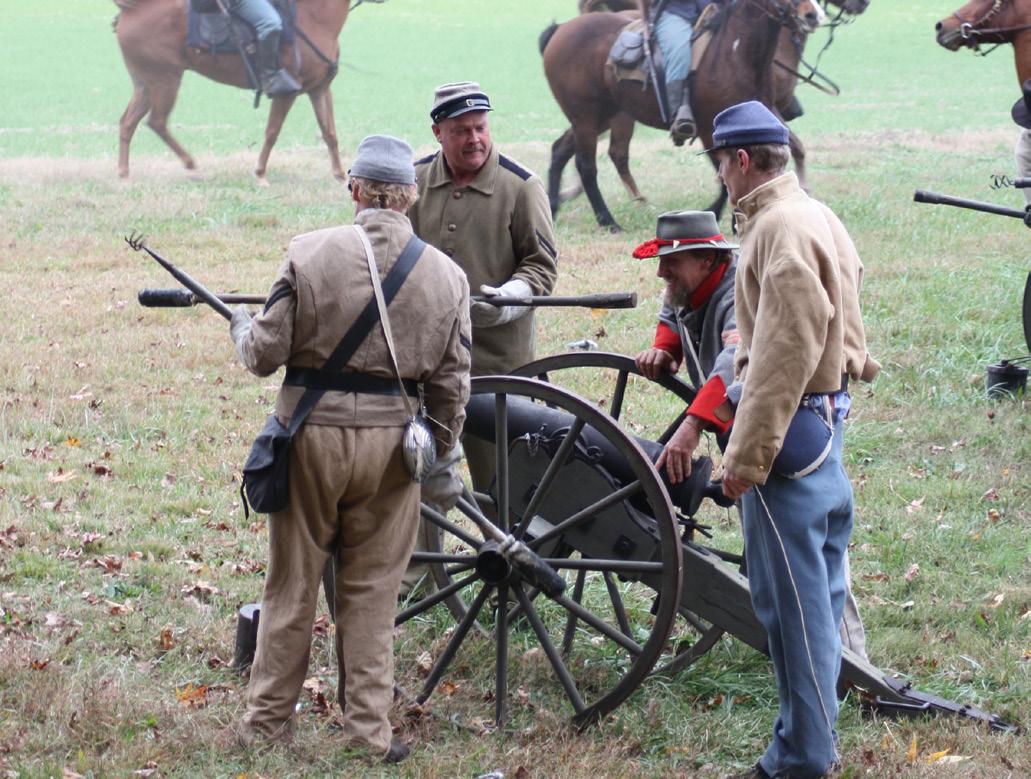






The second oldest town in Martin County, Jamesville was incorporated in 1785 as James Town, with its name changing in 1797 to Jamestown and finally, on Feb. 10, 1855, to Jamesville.
Situated directly on the Roanoke River, Jamesville residents depended on the shipment of agricultural and forest products, supplying local farmers with merchandise, and taking advantage of the early springtime fishing season that was centered here.
Jamesville thrived prior to the Civil War with the formation of a large sawmill operation headed by Dennis Simmons. The construction of the Astoria Mill about a mile upriver gave the county its largest antebellum industry.
During the Civil War, Jamesville’s placement between Union headquarters at Plymouth, downriver to the east, and Williamston, Hamilton and Fort Branch, upriver to the west, put the town in constant peril. The town’s unenviable position placed it, as one local historian described, in “no man’s land” between opposing Union and Confederate interests. The once-prosperous town was virtually destroyed during the course of the war. As a result, the only surviving antebellum residence in town is the ca. 1810 Burras House on West Main Street.
Post war redevelopment followed improved transportation and continued exploitation of the vast forests in the region. While Simmons’ mill suffered devastating losses during the Civil War, it recovered nicely, rebuilt on a larger scale and operated until 1919. In 1889, it was touted as the largest manufacturer of wood shingles in North Carolina, producing about 25,000 a day.
Even more important was the incorporation in 1869 of the Jamesville and Washington Railroad (J&W) and Lumber Company. By 1870, the first segment of a narrow-gauge railroad extended into the company’s vast stands of timber south and east of Jamesville. Facetiously known as the “Jolt and Wiggle” for its uneven ride, the J&W made possible the expansion of
large-scale timbering and small-scale farming into heretofore hinterlands in Jamesville and Griffins townships. Furthermore, the county’s important fishing industry “including the famous fishing machines” was centered here, particularly in the spring when runs of herring brought hundreds to the Roanoke River to obtain a supply of fish to salt and preserve.
The C.C. Fleming Fishery on Stewart Street was the most successful, and stands today as the only important structure associated with the fishing industry in Martin County. Jamesville currently has the only riverfront restaurants in Martin County. That is River’s Edge.
The advantageous location of the original commercial district along Water Street near the river was lessened as travel relocated to the highways, and old commercial buildings were abandoned for new ones along what became U.S. 64. In fact, only one survives on site the 1914 (former) U.S. Post Office The ca. 1900 general store of Henry Gray Griffin, located across the street from the old post office building, was demolished in 2003.
Info from Martin Architectural Heritage: The Historic Structures of Rural North Carolina County, edited by Thomas R.Butchko.








With the establishment of the “Goose Nest” post office in 1888, this community – which began in the early 1880s as a small, rural trading center around a collection of farmhouses –received its first official name.
In 1905 the town’s name was changed to Oak City because a town citizen visiting Raleigh saw “Oak City Laundry” on a delivery wagon and liked the name enough to urge the General Assembly to effect the change.
With farmers and traders attracted by the new Wilmington and Weldon Railroad service, Oak City enjoyed dramatic and steady growth during the early 20th century. By 1910 the population had more than doubled to 251 residents, and the town’s educational and religious offerings expanded to meet the growing needs of this area. While commercial activity included a number of general stores and boarding houses, the industrial activity consisted of saw and planing mills, as well as a grist mill.

The proliferation of the automobile after the 1910s, accompanied by improvements in the county’s roads, brought significant changes to Oak City. Residents were now able to visit larger towns, so merchants gradually reduced their offerings to cover the basic needs of locals.
The end of passenger rail service in 1939 brought about an end to that chapter of town history. Today, the town remains a strong community in northwestern Martin County, with N.C. 125, N.C. 11 and N.C. 42 converging to bring visitors through town. St. Mark’s Missionary Baptist Church, organized in 1883 as the 1st church for African-Americans in Goose Nest Township, is also located in the Oak City area but underwent considerable remodeling in 1968.
Info from Martin Architectural Heritage: The Historic Structures of Rural North Carolina County, edited by Thomas R.Butchko.

The location where the railroad crossed the Williamstonto-Tarboro road (now N.C. 142) proved a logical place for the development of a trading and marketing center. Named to honor Elder Sylvester Hassell, a noted Primitive Baptist preacher, historian, author and educator, this community did not begin its main growth until after the Wilmington and Weldon Railroad extended its line through western Martin County in 1890.
In preparation a post office was established in January 1890, but Hassell was incorporated much later by the General Assembly in February 1903.
Laid out in a grid plan, the town had steady but unspectacular growth during its early years.

The re-establishment of a Christian congregation occurred in 1907.
The 1920 census records a population of 135 people, with graded schools for both races in or near town.
Today, Hassell’s importance as a mercantile center is restricted to providing basic foodstuffs and supplies to a limited trading area, but it continues to actively function as a municipality.

The commercial and industrial enterprises consisted primarily of supplying the needs of area farmers.


"A Town that Cares"

Info from Historic Hamilton: National Register of Historic Places Historic Districtbrochure,bytheHistoricHamilton CommissionInc.And,MartinArchitectural Heritage: The Historic Architecture of a Rural North Carolina County, edited by Thomas R. Butchko. Some of this information was excerpted from the “MartinCountyHistory,Volumel”


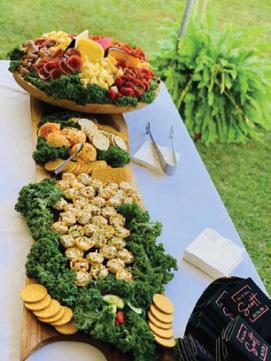



The two most important developmental forces in Martin County, the arrival of railroad transportation and the proliferation of profitable lumber mills combined to become major catalysts for the birth of Parmele.
The Wilmington and Weldon Railroad began construction around 1890 to extend its north-south line down through Martin County on a location near the Parmele-Eccleston Lumber mill. This chosen tract of land centering on the Albemarle and Raleigh Railroad developed so rapidly after the line was completed that on February 14, 1893 the General Assembly incorporated it into the town of Parmele.

In 1895, a third railroad line was extended from Parmele southeasterly to Washington making this newly-formed town the junction of railroad lines leading in five directions.
By 1896 it had two lumber mills, ten general stores, one confectionery, and a population of 200 residents. A devastating fire in 1904 destroyed much of the town’s business sections along the railroads and, along with the declining available timber, may have accounted for the closure of those two lumber companies. During the 1910s Parmele became noted as the location of a very successful industrial institute for African American children. Directed by Dr. William C. Chance, the institute taught not only academic learning but also agricultural, mechanical, and home-making skills.
After a merger with the town’s public school, the Parmele Industrial Institute was moved into the first brick school building erected for either race in Martin County. The institute achieved
Incorporated February 1870, Robersonville – located directly on the railroad’s route between Tarboro and Williamston – is the first town in the county dependent on the railroad, rather than the Roanoke River, as its chief commercial and communication link with the world beyond Martin County.
Although the Seaboard and Raleigh Railway Company would not be incorporated until late 1873, town founders envisioned it as a prominent trading center and market for western Martin County. Growing slowly during its first decade, the town quickly fulfilled its destined fate after the railroad’s completion in October 1882 and boasted having eleven general stores, two physicians and a number of industries by 1884.
regional acclaim, eventually occupying a six-building campus. Unfortunately, the main structure was destroyed by fire in 1954 causing the school to be consolidated into Robersonville’s public school for blacks.
Parmele still seemed to thrive on the commerce brought to it as the juncture of three railroad lines, and despite an increasing reliance on automobiles and trucks after the 1910s, the town’s population grew or remained steady during the mid-20th century, peaking to 417 in 1940. Though improved state highways soon avoided what was left of the old commercial section, the town continues to supply its residents with basic goods through the presence of a general store. The railroad tracks serve as mute testaments to Parmele railroad heyday.
Info from Martin Architectural Heritage: The Historic Structures of Rural North Carolina County, edited by Thomas R.Butchko.


The town’s population had increased in 12 years to 400 residents with farm families and ambitious young men moving there because of its various entrepreneurial, educational, and social opportunities. As site of the county’s first tobacco market in August 1900, Robersonville embarked on a second, more expansive era of prosperity, civic progress and development with a population that surged up to 1200 during the early 1900s. The growth of new industries brought new residential areas which opened to provide homes for the town’s increased population –most notably “New Town,” a residential neighborhood that would become one of eastern North Carolina’s most cohesive and civic-minded early 20th century African-American communities.
The newly acquired prosperity, improved educational opportunities and modern municipal services fostered a lively cultural and social life in town whereentertainingdiversionsandseveral cultural,civicandsocialgroupsflourished. Even during the Great Depression, economic expansion slowed drastically inRobersonville,butitscitizensbenefited from state and federal relief programs. Inexpensive sports and popular social pastimes, such as baseball and bridge, alsoeasedthehardshipsformanyduring those rough years. Though the railroad has been replaced by the new U.S. 64 Bypass as the town’s main link to the outside world, Robersonville continues to thrive providing needed services, industry and entertainment to local and out-oftown residents alike. It is the home of St. James Place Museum, and a restored 1910 Primitive Baptist Church.
Info from Martin Architectural Heritage:TheHistoricStructuresofRural NorthCarolinaCounty,editedbyThomas R.Butchko.






Williamston is the county seat of Martin County, located in the northeastern Coastal Plain of North Carolina. The town’s population is about 7,000, while the county’s total population is about 25,000.
The exact date of the first settlement at what was to become Williamston cannot be determined, but it is known there was a village in the general locality as early as 1730. The first settlers are said to have moved from Bertie County to the south side of the Moratoc (now Roanoke) River and located near the ruins of what had been a Tuscaroran Indian village.
The locality was known to the Indians as “Squhawky,” but it was called “Tar Landing” by the English settlers, as it gradually became the principal shipping point for the tar, pitch, turpentine and other forest products and meat produced in the section.
The settlement prospered and was designated the seat of government when Martin County was chartered in March 1774. A little over five years later, during the Revolutionary War, it became the first incorporated town in the county and was named “Williamston” in the charter granted at a session of the General Assembly held in Halifax during October and November 1779. There are two versions concerning the selection of the name “Williamston” for the town. One of them – based largely on hearsay and legend – is that the name was chosen in honor of a poor Irish weaver named “Dick” Williams, who was supposed to have settled in the area around the middle of the 18th Century. It is said he arrived with 75 cents in his pocket, but by hard work and strict economy he managed to create a substantial fortune and became one of the most influential men in town.
The other version is that the town was named in honor of Colonel William Williams, scion of a wealthy and distinguished

family which owned large plantations in the northwestern part of the county prior to the Revolution. The name Williams is prominently connected with the early history of the county.
Colonel Williams’ father, also named William Williams, migrated to this country from Wales in the early 1700s and settled on the south bank of the Roanoke River in the upper end of the county, which at that time was in Edgecombe and was later a part of Halifax before it became Martin.
William Williams II was a delegate to the Hillsborough and Halifax conventions in 1776, was elected colonel of Martin County’s militia when it was organized and continued in that capacity until after he was elected the county’s first state senator in 1777. He resigned his military commission shortly afterwards and was succeeded as commanding officer of the county’s militia by his nephew, Lt. Colonel Whitmel Hill.
Williamston’s importance as a town and its growth and 22
development immediately before and after its incorporation was largely based on two factors. First was its location on the banks of a navigable river; and second, its designation as the seat of county government when Martin County was formed in 1774.
The Roanoke River enabled ships of considerable size to navigate its waters as far upstream as Williamston before there were any roads. Being the seat of government necessarily brought most of the residents of the county to Williamston to record legal documents, attend court sessions or attend military musters, elections or other similar functions.
Having a public landing, it was automatically an important shippingpointforriverfreighttraffic,bothincomingandoutgoing. Later, the railroad came, resulting in increased commerce by rail and water. Moving into the 19th Century, the bridging of the river in 1922, Williamston became the hub of a system of major highways and roads upon which the business and commercial life of the county now largely depends.
WilliamstonishometotheSen.BobMartinEasternAgricultural Center, a showplace for equestrian events and other spectator events that opened in 1998. There is a downtown revitalization effort underway to complement the town’s Commercial District designation on the National Register of Historic Places.
There are several historic structures of interest: circa-1831

Asa Biggs House; circa-1885 Old Martin County Courthouse; circa-1850 Doctor W. Bagley Office; and the circa 1853 Skewarkey Primitive Baptist Church.
The Skewarkee Trail connects downtown with the Roanoke River via a converted railroad bed. The paved trail is used by bicyclists, walkers and others.
HistorytakenfromresearchbythelateF.M.Manning

We celebrate our county’s 250thAnniversary with great enthusiasm! May the next 250 years be more memorable!
Jerry M. McCrary, Mayor
Dustin
Kenneth W.Andrews, Commissioner
Glenda K. Barnes, Commissioner
Elinda C. McCray, Commissioner
MaryA. Morning, Commissioner
"Home

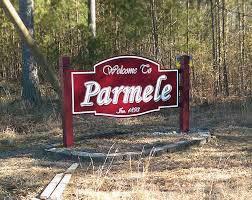
“Youknow,thatblastedrailroadoutofJamesvilleisliterallya myth.Itwasthere,yes,butbyheck,nooneknowsthefirstthing aboutit.”
That was the picture painted of the Jamesville and Washington Railroad by railroad historian and author, H. Temple Crittenden.
The Norfolk resident penned the exclamation of apparent frustration in a 1966 correspondence to Francis Manning, longtime editor of The Enterprise.
Little did Crittenden know, the story surrounding the area’s earliest railroad was filled with adventure and intrigue.
Sadly, the railroad nor the town it brought to life would see the next century. Most of the stories about the town now rest with those who built it. Some names live on – although faintly – still synonymous with Dymond City. In September of 1956, the last resident of Dymond City was laid to rest under the canopy of a large magnolia tree, deep in Farm Life.
“He was a good man,” the local store keeper, Jim Manning, once said of Matt Bissell. “If he told you something, you could count on it.”
Matthew Wesley Bissell, born Sept. 25, 1885, was a child of Dymond City in every sense and a drop in the melting pot of cultures that would make up the promising railroad town.
His father, William Bissell, was born in England in 1842. It was believed the elder Bissell was brought directly from England by the business minds behind the J&W Railroad.
Records show William Bissell initially served as the line’s chief engineer and later as superintendent.
According to the 1880 census, the first and only census to


include Dymond City; William Bissell and his wife, Sarah, 20, lived in the city’s hotel. The census listed Sarah’s occupation as hotel keeper.
The hotel, built in 1870, became a temporary home to visitors from as far away as Ireland, England and the northern United States. Some European visitors would later make Dymond City theirhome. Inpreparationforthe1974MartinCountybicentennial, one Farm Life resident shared her childhood memories of the hotel. Mrs. Dorcas Roberson, mother of long-time Martin County deputy Nathan Roberson, described the hotel as being “just like Kitty’s saloon on Gunsmoke.”
As was the case in many homes of the day, the census listed two servants in the Bissell household: 9-year-old Henry Sykes and 25-year-old Rosa Davis. Sister Beatrice came along, and little Matt was soon to follow.
The Bissell family would be one of many around the globe

While living in old Dymond City, Griffins township, Martin County, about 1883, a Mrs. Elkington invented the world-famous “Octagon Soap.” Taken from Martin County History, Volume I, by Francis M. Manning and W. H. Booker: 1977




WilliamstonCleanershasbeen providingdry-cleaning&
Weprovide ahighlevelofprofessionalexpertise,customerservice, andconsistentqualitycleaning, arecognitionthattellscustomers youcantrustustodeliveroutstandingserviceandquality.



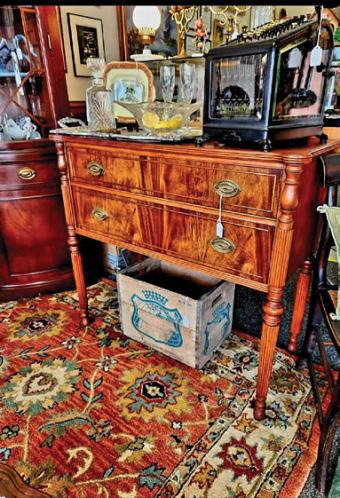



that were drawn to Dymond City by the promise of prosperity. That promise began with a group of businessmen from the North, following the Civil War. Francis Lightfoot, a Pennsylvania timber merchant and surveyor, began buying land between the Roanoke and Tar rivers around 1868.
In an 1870 article, The Tarboro Southerner wrote:
“. . . And for the past two years, (Lightfoot) has been preparing for the settlement of a first-class town.”
That town would later be called Dymond City, a utility town built by and for the railroad company. The Jamesville and Washington Railroad and Lumber Company, the organized effort of the Pennsylvania business group, was issued a charter by the General Assembly of North Carolina in February of 1869.
Richard Waring of Pittsburgh and Henry H. King of Philadelphia ran the company. Waring and King operated the business adventure with the backing of English investors. Reportedly, the “English Capitalists” put in $300,000 in cash. For this, they received first mortgage bonds on the entire assets of the company. Many believe these bonds were the first of their kind –secured by property – issued in Martin County.
Lightfoot, who would later be named company president, moved to Jamesville to begin surveying the railroad route. The J&W opened trade lines by connecting steamer ports in Jamesville and Washington. The area’s exquisite cedar trees were popular items for sale. Making and selling shingles was one business that thrived thanks to the developed trade route.
Legend has it shingles from Dymond City were used to re-roof Mount Vernon, home to George Washington. A man who would leave his mark on the area for years to come introduced the shingle business to Dymond City. Abraham Fisher was chosen by Waring to oversee operations of the railroad after a slow start. Although not recorded, it is believed Fisher arrived in Dymond City in 1872. Now the eclectic melting pot was heading towards her heyday.
The Fisher family came to Eastern North Carolina by way of a farm venture in the Alexandria Colony of the Argentine Republic. The Irishman came with his wife and two daughters.
H. Temple Crittenden alleged in a 1965 correspondence to Martin County that Fisher came to Martin County “after being chased out (of the Argentine Republic) by Indians.” Documentation of his claim has not been discovered. When Fisher took over, the railroad track was completed – 21 miles long – finally reaching Beaufort County. An aged, yet undated newspaper clipping set the stage for the celebration that followed. Lottie Hale Bonner wrote of the multitude gathered along the track outside Washington in 1874 to greet the first railroad in Beaufort County.
“The crowds who celebrated the event made the trip to the scene in buggies, wagons, and carts with banners flying to meet
the train,” Bonner explained.
By all accounts, Fisher and his family were well accepted in the area. Once word of their move spread among the friends of Fisher and Henry P. Nolan, visitors flocked into Dymond City from points around the globe.
Megessa, the Fisher home, was built on land purchased along the railroad. His will, dated 1910, described the property as, “200 acres of woodland in N.C. situated on the old railroad and _ miles from Dymond City.”
Nolan, who would serve Dymond City as postmaster, had made the trip to the United States with Fisher. The fellow Irishman married Fisher’s oldest daughter, Maria.
A devout Quaker, Fisher arranged services for locals who shared his faith. This population was once great in number. Evidence leans towards Megessa as the site for these services, although others claimed the hotel. Fisher’s business abilities, although questioned, pulled the J&W Railroad through financially treacherous times. Eventually, the continued task would become too much for him. Fisher would resign and turn over operations to William Bissell.
Soon the face of Dymond City would change for good. After numerous sales of the business, the J&W Railroad made its final passenger run on Jan. 25, 1892. The population, once peaking at 100, would drop to 10 by 1897, the year the railroad closed for good. The Nolans and the Bissells would be the last to leave Dymond City. The Nolans returned to Pennsylvania. William and Sarah Bissell would go no farther than Jamesville.
Matt Bissell spent the remainder of his day near his childhood home in what is now Farm Life. The Bissells are buried together just outside Dymond City and now watch over the stories and secrets of what was once the promise of the east.
“The story of the J&W is still percolating,” Crittenden wrote to Francis Manning. “I am hoping that a bit of information will eventually come to the surface.”






























Mission: To connect the community through engagement of resources that are offered through education, fellowship, and restoration for health and well-being. All donations are tax deductible.
In order to preserve the legacy of West Martin School, the West Martin Alumni Association is doing business as West Martin Community Center, a 501c charity non-profit that was created by the descendants of the community founders, graduates and other members of the surrounding communities of West Martin High School.
The founders aspired to have a positive educational and community impact on the communities in which they served and lived.
Additionally, the Center has provided a positive impact on the well-being of all participants.
Being ever-mindful of our true heritage; being vigilant with dedication towards preservation and to continue their legacy helped us learn about our ancestors’ goals and achievements.
As we reflect with gratitude upon who they were, and their everlasting love which set the path to who we are now and what we want to accomplish in the future.
As we work toward organizational excellence we honor the continued achievement of historic preservation in making a forgotten and invisible history visible.
We are presently involved in non-profit management and preservation through public use of the facility.


Throughout the 10 years, there have been many more successes than challenges and setbacks.
With the grace and favor of God, the Center is thriving and will continue to grow as we build upon the unity that we have created.
Our goal for the health and well-being of individuals, we have established partnerships with local and state agencies programs and services that were not accessible in the rural and farming area of the northwest portion of Martin County.
Our goal by partnering with these agencies is to prevent and intervene in the advancement of chronic diseases and how we live and reflects to who we are.
We are resolved to provide health and fitness programs and community-engaged opportunities.
We will remain steadfast in seeking funds in restoring the facility to greater operational usage.
Again it is important to note that we are committed to remaining steadfast in the restoration of the facility, to provide operating space for human service agencies and other organizations for special programs.
As West Martin Community Center grows, people's lives will change.
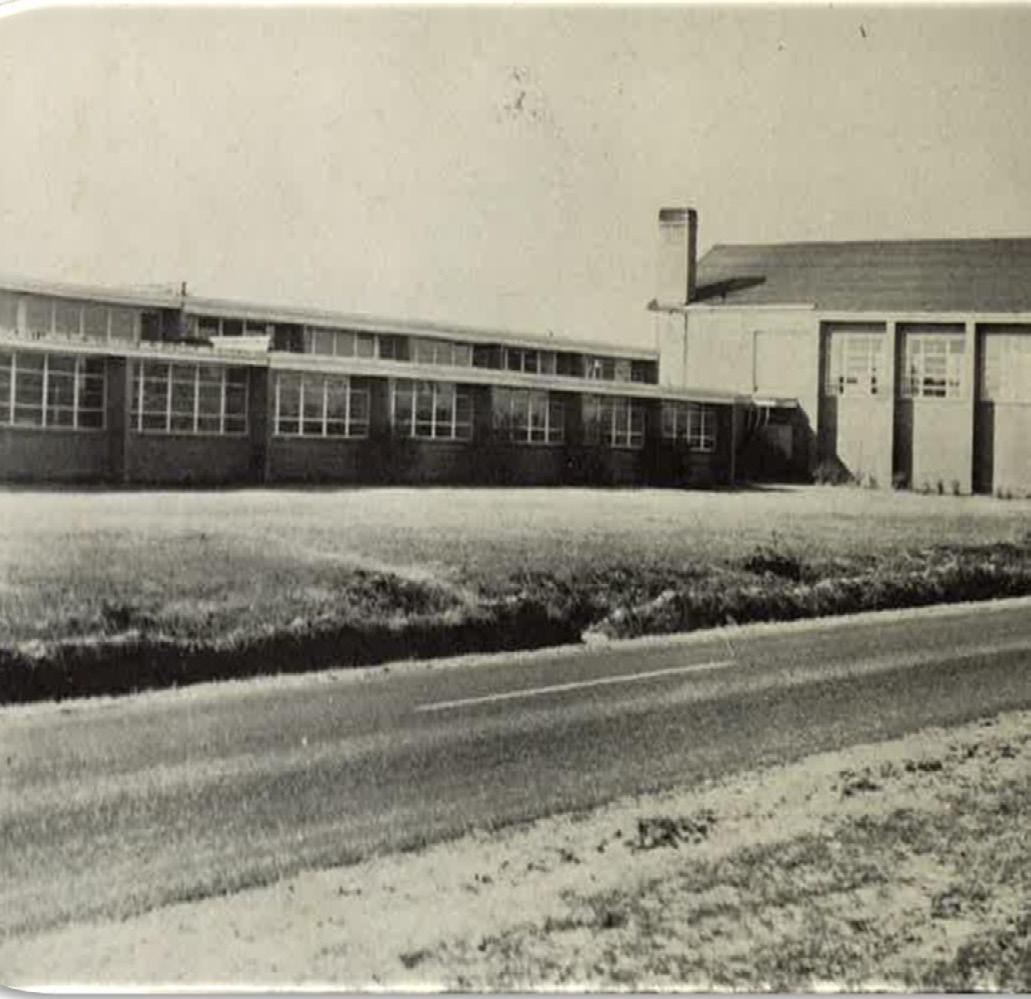
OurPledge:Colossians3:23-24:“23Whateveryoudo,work atitwithallyourheart,asworkingfortheLord,notforhuman masters,24sinceyouknowthatyouwillreceiveaninheritance fromtheLordasareward.ItistheLordChristyouareserving.”


Asa Biggs (1811-1878), a prominent North Carolina politician and jurist, and his wife, Martha, built this Federal and Greek Revival—style house and lived here from 1835 to 1862.
Biggs practiced law from his office just across Smithwick Street. Biggs served in the state legislature from 1840 to 1847 and in the U.S. Senate from 1854 to 1858.
President James Buchanan appointed him a federal district judge in 1858; he resigned in 1861 when North Carolina seceded, and Confederate President Jefferson Davis then appointed him a district judge.
Biggs moved his family west to Tarboro in 1862, when the Union army approached Williamston. Federal soldiers slept and cooked in the parlor here and kept their horses on the rear verandah.
Two of Biggs’s sons, William and Henry, joined the Confederate army as teenagers in 1861 and 1864 respectively. William Biggs

survived the war, but Henry was wounded at Appomattox Station, Virginia, on April 8, 1865, the day before Gen. Robert E. Lee surrendered at Appomattox Court House, and died four days later.
After the war, Asa Biggs resumed his law practice in Tarboro, where he joined other North Carolina lawyers protesting the state supreme court’s alleged partisanship during the 1869 presidential campaign. Rather than face contempt charges or apologize, Biggs moved his family to Norfolk, Virginia, where his brother lived. Biggs died there in 1878.
This house remained in the Biggs family until 1928. In 1978, the Martin County Historical Society purchased it.
During restoration, workers found evidence that shells from Federal gunboats on the Roanoke River, less than a mile from here, had struck the house.
Signage on the property erected by North Carolina Civil War Trails.
This 1831 home reflects local adaptations of Federal and Greek Revival Styles popular when it was built and remodeled. Home of Asa Biggs, a former U.S. Senator and federal judge. The Biggs family fled the home in 1862 under the threat of invading Union troops. Placed on the National Register of Historic Places in 1979.







(ThisarticleisbasedinpartonaninterviewconductedwithformerEverettsMayorJamesStallsbeforehisdeathin2007.)
Over the decades, organized baseball has taken many forms in Martin County. Documentation of games goes back to at least the early 1900’s. Many communities within the county formed their own teams and games were true neighborhood events. Rivalries were friendly and yet fierce. Travel, even to points within the county, was a much greater undertaking than it is today. A ride from Farm Life to Everetts today would likely take 25 minutes. In the early days of organized baseball, it may have meant a ride in the back of a local farmer’s big truck. Safe to say it would have been a longer ride than 25 minutes. A few times a season teams made the trip to exotic locales like Whitepost, just outside of Bath in Beaufort County or even farther south to Aurora. Wednesday, Saturdays and some Sunday’s, young men across the county jumped from tier polls, wiped some “baccer gum” off their hands and jumped into a baseball uniform.
“A little baccer gum left behind was not a bad thing, especially for a pitcher,” the late Preston Cutler, who played for Whitepost, onceexplained. Theterm“CountyLeagueBaseball”hasbeenused to describe many seasons of play, especially those surrounding World War II. The June 5, 1934 edition of The Enterprise reported, “organization of a baseball club in the Everetts community is underway with a lineup virtually complete and equipment already on board.” This was according to local businessman, W.F. Crawford. According to the article, efforts were also underway to purchase uniforms.
The Everetts lineup included pitchers, Raymond Stalls and Latham Jones; George Ross, catcher; Tom Barnhill, Vernon Page, Joe Sam Stalls, A.D. Wynne, Jim Johnson, Archie Mobley and H. Bruce Russell. By the June 29, 1934 edition, The Enterprise reported Everetts handed Corey Store a 5-2 loss at home “behind the 7-hit pitching of Stalls. Perry also pitched a good game for the visitors.” By July, the Farm Life team, “trims Everetts 9 to
3,” guided by the pitching of Milton Griffin, whose talents were not limited to the mound. He posted hits at three at bats, two leading to extra runs. According to newspaper coverage, Raymond Gurkin, who may be remembered as the owner of Gurkin’s Store on the Maple Grove Church Road, “hit safely in three at bats.” The pair accounted for half of the Farm Life runs. Farm Life’s pitcher was Evan Perry, father of Hall of Famer Gaylord Perry and Major League pitcher Jim Perry. Raymond Henry Stalls, like Perry, became a well-known for their natural talent throughout the local semi-pro baseball circuit. Stalls and Perry, whose baseball talents were never realized beyond their local area, would pass their love of the game down through their generations.
According to Stalls’ eldest son, James, Raymond Stalls was playing ball for the Bear Grass team around the age of 20, which would have been around 1926. An article from a 1933 edition of The Enterprise included coverage of Raymond Stalls pitching for Bear Grass. Years before Evan Perry’s sons were making their way to the big leagues, Stalls and was joined by three of his sons on the Everetts Cubs roster. At one point in the 1940’s, Raymond Henry Stalls was joined on the roster by James, Raymond Jr. and Jonah Mack, known to many as Buddy. James, who would later become mayor of Everetts, played outfield and pitched. Brother “Jr.” played third base and the younger Jonah Mack played shortstop, outfield and pitched. The eldest Stalls was farming just outside of Everetts, near where the U.S. 64 interchange is today. His sons worked with him.
“We played ball at lunch every day,” eldest son James said in an interview before he passed away. “Almost had a team,” he laughed. “One of us was always throwing a ball,” James explained. “We’d hit corncobs.” He described the ball they would throw as actually being tobacco rounds covered in twine and tire tape. “There was a few years we all played together,” James said


regarding his father and two brothers. “We had a good time.” The oldest son began playing with the Everetts team around the age of 16, which would have been 1941. The Everetts Cubs played ball at the old Everetts School, according to James. No longer in existence, the school was located near what was Martin Academy on East Main Street/U.S. 64 Alternate. When asked it there was a lot of pressure in playing ball with their father, James responded without hesitation, “Wasn’t much different than working with him.” And work was something the Stalls boys knew plenty about. By their own description, baseball sounded much like a release. “You could always find energy to play ball,” James laughed. He explained there was a different environment when it came to playing ball back then. “There were no fights,” he said. “You could argue but it didn’t get that far.” James Stalls made a name for himself as a ball player. The Cubs roster was minus one Stalls, the oldest of Raymond’s sons was recruited to play ball by a Belhaven businessman/ manager. He would be accompanied to Belhaven by teammate and friend Darrell Taylor. Not one for giving praise, Stalls said, “Darrell Taylor was the best defensive first baseman I ever saw.”
Many in Williamston remember Taylor as a longtime firefighter who served as assistant chief. No one will ever know how many of these local players may have made it to “the show” or at least close if the economic climate were different at the time. “We were just happy to be playing ball,” James explained. The Stalls’ love of baseball was handed down for many generations. Many of the sons and grandsons shared their family’s love of the game. A great-granddaughter took her talents to college softball in Ohio and greatgrandsons are taking the field every chance they get. Today, Raymond Henry Stalls has great-grandsons playing baseball. We can only imagine how excited he would be to see his love of the game carried on today.






 Story by Loreta Gurkin and Becki G. Lilley
Story by Loreta Gurkin and Becki G. Lilley
The community of Farm Life holds a special place in the hearts and lives of those who have called it home through the years.
Along with the sweet fellowship of the churches, two civic clubs have kept the community spirit alive and well for the past sixty-eight years.
They are the Farm Life Ruritan Club and its sister organization, the Farm Life Ruritanette Club.
Soon after the Ruritan Club became a reality, talk began among the members’ wives and the neighborhood women to form a club for their community service.
Ella Griffin, grandmother of Andy Griffin (Griffin’s Barbecue Family), spearheaded the effort and a group of more than fifty women came together to form the Farm Life Ruritanette Club.
After choosing a name and officers, the first Thursday night of each month was designated as the meeting night.
The Club motto became “Not Self –But Service” and soon after, the Club’s song lyrics were written to the tune of “God Bless America.”
area.
The Rurtianettes also stand behind our Ruritan Club and its members in their endeavors.
With the passing of time, many of the charter members who were there on March 6, 1956, our “founding mothers” are no longer with us, but their spirits live on in their recipes included in the first self-published Farm Life Ruritanette Cookbook, printed, and put together by hand in a small black three-ring binder and made available for sale to the public (as a club fundraiser).

God Bless Our Ruritanettes, Club that We Love, Stand Behind Us and Bind Us with a Spirit of Love from Above,
May its Members be of Service to All who are in need, Not Self But Service shall be Our Creed.
The club song is still sung after the call to order in every meeting.
It is sung with conviction, too, for that is what this Club was built upon service to the community, helping those in need with financial gifts and supporting worthy causes in the surrounding
Later, the format changed to a spiral notebook with a heavy cardstock, cream colored cover.
At the 25th Anniversary celebration of the club in May 1981, the Rurtianettes had sold 3,000 cookbooks.
These recipes and cookbooks have been a staple in kitchens across the miles.
Most recently, additional recipes from new members were requested.
The Club’s current edition includes a beautiful collection of the club’s charter members ‘tried & true’ recipes, members through the years and current membership.
This simple fundraiser project has provided the Ruritanette Club with continuity and supporting countless needs throughout the years.
Passing the torch from one generation to another helps us to remember with thanksgiving and respect to those who had the vision, those who kept the mission through the years and now with grateful hearts for the younger women who will keep our Club and its values alive and well in the years to come.











Located in the heart of Martin County, The Woman's Club of Williamston is a distinguished organization with a legacy that spans nearly a century.
Established on November 18, 1925 with 39 members, this service club has been an unwavering beacon of civic dedication and philanthropy, shaping the cultural and intellectual growth of Williamston. The club was incorporated on October 16, 1928, as part of the North Carolina General Federation of Woman’s Clubs as well as the International General Federation of Woman’s Clubs. Originally gathering on the first floor in the historic Masonic Hall at the intersection of North Smithwick and Church Streets, the club evolved over the years, and was the home to The Woman’s Club until 1960.
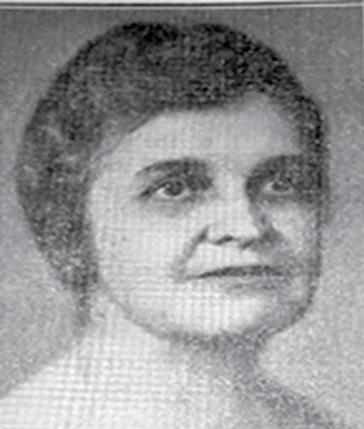

The members had a 99-year lease on the building, raising funds to remodel the structure, later purchasing the hall in 1956. In 1960, the hall was razed with the lot sold to the town of Williamston. Despite changes in meeting venues, the commitment to civic improvement
endured, leading to a series of significant achievements that have left an indelible mark on the community.
Lucy Biggs
In 1937, a Junior Woman’s Club was formed under the sponsorship of the club. In 1945, the two clubs merged, and their members continued to uphold civic and educational initiatives. In 1960, another new Junior Woman’s Club was organized, which after several years merged with the original club, also.
During the early 1940’s, the members made valuable contributions to the war effort through the Red Cross and USO work and the sale of War Bonds.
The club’s endeavors extended far beyond, including the formation of a Girl Scout Troop in 1944, pioneering the first Bloodmobile visit in 1949, designating the town of Williamston as a bird sanctuary, supporting the Martin County Historical Society and endorsing the Williamston Partnership for Revitalization in 1998. A testament to the club's enduring impact was the contribution toward the establishment of the Williamston Public Library in 1961, later incorporated as Martin Memorial Library.
In 1975, the club celebrated its 50th anniversary with 85 members. The celebration included a dinner meeting with special recognition of past presidents and charter members. In 1978, the club donated $1,000 to the Martin County Arts Council toward the purchase of a grand piano for the Martin County Civic Auditorium.
Year after year, the club has conducted a variety of fundraising events like the Christmas Rambles (later known as Christmas Tours), fashion shows and the successful 2015 project, “A Taste
of Williamston” Cookbook, a culinary treasure trove blending member recipes with historical insights.
Three distinct club groups — Potpourri Club, Budding Issues Club (a merger of the Garden Club and the Public Affairs Club) and Friends Club — reflect the diverse interests and passions of the members. These club groups are now discontinued, and the club functions as one unit. Under the capable leadership of the current president, Mary Anne Corey Crowe, The Woman’s Club of Williamston forges ahead, guided by its mission to “support community services, charitable giving and educational enrichment.”
The club remains a vital asset to the community, promoting scholarship opportunities, charitable donations, and steadfast support for health and educational initiatives. Presently, The Woman’s Club of Williamston continues its noble tradition of supporting civic projects, backed by a budget sustained through community fundraisers.
The Williamston Rescue Squad, United Way, Williamston Downtown, Martin County Community Players, Relay for Life, Martin Memorial Library, Martin County Historical Society, Boys and Girls Club, Martin County Arts Council and various other initiatives benefit from the club’s unwavering commitment.
Beyond its tangible contributions, The Woman’s Club of Williamston serves as a unifying force, bringing together women from diverse backgrounds to network, cultivate enduring friendships, and channel their energy towards enhancing and giving back to the community. As a living testament to the power of women, the club stands as an enduring symbol of service, resilience, and community spirit in the heart of Williamston.
For more information about The Woman’s Club of Williamston, please contact Club President Mary Anne Corey Crowe at maccro.maryanne@gmail.com.


















For several years various people and groups, particularly the Bear Grass Ruritan Club, had been urging the formation of a fire department for the Bear Grass Township.
Finally, during = the year of 1964, a group of men, Dan Peele, A.B. Ayers, Buie Bailey, Elmer Griffin, Ralph Mobley, Javan “Pete” Rogers and Tim Malone, decided the time had come for action. They worked out a plan for financing, made up a list of canvassers and then called a general meeting of all the people in the community who were interested in securing a fire department.
The response at that meeting was very favorable, so, at this same meeting, the Bear Grass Township Fire Department was organized and officers elected. Dan Peele was elected President; Rufus Gurganus – Vice President; Pete Rogers –Treasurer; Jim Sawyer – Secretary; Freddie Martin – Assistant Secretary. Buie Bailey was chosen as the Fire Chief and Irvin Terry, the Assistant Chief. On Jan. 28, 1965, a second general meeting was held. At this time the election of officers was approved and directions were given to go ahead with the selection of a Board of Directors. Approval was also given for the preparation of plans to get a bill to set up the Fire District through the legislature.
On Jan. 29, 1965, the officers of the newly formed Bear Grass Township Department met and appointed a committee to work with the officers. These were: Harry Ayers, Heber Coltrain, Kader Ward, Luther Harris, Hilton Harrison and Chesley Jones.
On February 22, 1965, this committee was approved as Directors. One-year directors were Harry Ayers and Luther Harris; two-year directors were Heber Coltrain and Chesley Jones; and three-year directors were Kader Ward and Hilton Harrison.
Further meetings were held and work was continued on getting a site for the construction of a fire house, drawing up specifications for a fire truck, collecting donations, and taking
care of the legal work involved. David Lee of the Fire and Rescue Service Division of North Carolina was invaluable help in making all these plans, and in conducting training for the firemen.
The first two individuals to receive fire training were Chief Buie Bailey and James Rogerson.
On May 31, 1965, a contract was signed with Howe Fire Apparatus Company of Anderson, Indiana for a truck, and with Williamston Motor Company for a chassis. The total cost was $15,456.00. The bill to set up the Bear Grass Township Fire District passed the legislature and became effective on July 1, 1965. The Martin County Commissioners donated $1,000 from county funds to the new fire department.
A lot on which to construct the fire house was purchased from Irvin Terry for $500 on September 16, 1965. A building committee was appointed and work was begun on the fire house with Jack Roberson in charge.


A big barbecue supper was held on Dec. 10, 1965 to raise money for the new fire department. This was an annual affair for many years.
A group of men from the department traveled to Vinton, Virginia to pick up the new fire truck, and on Jan. 19, 1966, the Bear Grass Township Volunteer Fire Department was in business.
Since that time the firemen have been organized, insurance on truck, building and men obtained, a tanker added, and much additional equipment purchased.
A loan of $ 12,000 was obtained from the Branch Bank and Trust in Williamston. The present indebtedness is $7,600.
The Bear Grass Township Volunteer Department has served the community on many calls to houses, tobacco barns and grass fires. It has also assisted the Williamston Fire Department on several calls.
Bear Grass Fire Rescue, Inc. now has these apparatus available to serve the community needs:
2 engines
1 tanker
1 Pumper / Tanker
1 First Responder / Brush unit
1 Equipment and Crash truck
Much equipment has been acquired through 50/50 matching grants. These grants, along with generous donations and a strong fire tax base has enabled the department to consistently improve the response insurance rating and serve the community in ever evolving services.
The dedication of our firefighters and community has allowed us to progress to being a 1st class volunteer fire department with the largest membership in Martin County.
From establishment, in order of service, the Five chiefs of the Bear Grass Department:
Buie Bailey, Maehue Bailey, Keith Wynne, Greg Harrison and Joseph “Jody” Griffin (currently serving).


Alsotrysomeofourspecialty food madejustforyou!!






Roeania Little Reddick (September 5, 1882-April 19, 1969) was the first black midwife in Martin County.
She delivered both black and white babies and was affectionately known as “Aunt Roeania” by the community.
Anna Biggs Brown completed her apprenticeship under “Aunt Roeania” and was the second black midwife in Martin County.
“Aunt Roeania” was a businesswoman who owned her own farm and several rental houses. She was honored with the title of Mother in the Cedar Hill Missionary Baptist Church and a strong leader in her community until her health failed.














































